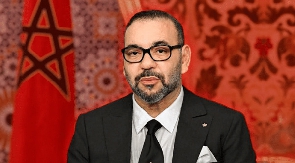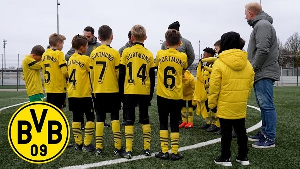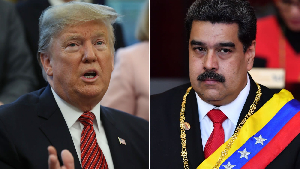No doubt, King Mohammed VI of Morocco is the most sports-inclined head of government in Africa. Since the celebration of the Throne Day on Sunday, his Kingdom, Morocco, has moved from one level of accomplishment to another in the on-going Women’s World Cup.
Virtually every Moroccan contacted gives credit to the monarch for the growing influence of Moroccan football. While the men’s team became the first African and Arab team to get to the semi-final of the World Cup at Qatar 2022, the women’s team now also has a claim to a slice of African and Arab records.
Morocco are the first African debutants to scale the group stage hurdle at the Women’s World Cup, despite being pummelled in their opening match.
Paradoxically, Germany which beat them in the opening match could not advance while Morocco summoned enough courage to scale through.
Everything now turns to a good return on investment for the monarch who at age 13 as a prince, was in the reception team of the victorious Moroccan side at the 1976 Africa Cup of Nations. Moroccans easily credit him for their football successes.
The U23 coach, Isaam Charai at the post match conference pointed out the monarch as the inspiration for the astronomic rise in Moroccan football standard.
To those who may not know, the coach’s statement could be considered an act of flattery. But it is not. The magnificent Mohammed VI Football Complex in Rabat will convinced doubters.
The centre likened to the Clairefontaine in France or St George’s Park in England, was the beginning of an overhaul of the North African nation’s football structure
No country would have had such facility and will not excel in sports. It was at the complex that Moroccan teams camp. A visit to the Mohammed VI Football Complex at the Sale area of Rabat will reveal a royal state of the art facility which the monarch has given to the kingdom.
One of the items that catches attention at the vast entry lounge of the unique football complex is a huge framed picture of the reception accorded the 1976 Africa Cup of Nations winning team of Morocco.
All the players in the picture wore maroon-coloured suits. In the middle of the group picture is a young boy, then 13. He wore a blue suit and a stripped tie.
That was the then Prince Mohammed who is today, King Mohammed VI.
Little wonder, Charai, the head coach of Morocco’s U23 team, attributed their success to King Mohammed VI. “We lifted this cup for King Mohammed VI,” Charai proudly declared.
The coach emphasized that their triumph was not a stroke of luck but a result of the team’s discipline and unwavering focus.
Information gathered reveals that there are three more of such football training complexes, though in lower scale, in Morocco while others are still being planned.
King Mohammed’s association with sports, especially football therefore pre-dated his ascension to the throne on 23 July 1999 upon the passing on of his father, King Hassan II.
Football in Morocco has blossomed under King Mohammed VI. Last year, Moroccan clubs were holders of both the CAF Champions League and the CAF Confederation Cup. By extension, the CAF Super Cup.
Women’s football received a big boost even before the Moroccan women’s team’s debut at the FIFA Women’s World Cup.
Prior to King Mohammed VI reign, the Moroccan women’s team was like a punching bag in the African Women’s Championship.
For instance, the team was pummelled 8-0 by Nigeria on 17 October 1998. But only last year, Nigeria’s Super Falcons struggled in vein and were eliminated by Morocco in the semi-finals.
King Mohammed VI was born on 21 August 1963, the day the Nigeria Football Federation (Founded 1933, though they seemed not aware) clocked 30.
He is not the only royal person interested in sports. The imposing Prince Moulay Abdellah Stadium in Rabat is named after an uncle of King Mohammed VI, indicating the royal family’s strong obsession for sports.
Another indication could be gleaned from the picture of the trophy presentation to Real Madrid when the Spanish giants won the 2014 FIFA Club World Cup.
The trophy was presented by Prince Moulay Al Hassan, the Crown Prince of Morocco. At the time he was making the trophy presentation, he was 11 years old.
When in 2013 Raja Casablanca emerged as runners-up at the FIFA Club World Cup, following their 2-0 loss to Bayern Munich they were rewarded with a futuristic complex.
For their performance, His Majesty King Mohammed VI, the sports inclined ruler of Morocco opted to reward the club with structures instead of pecuniary which is the norm in Africa.
A football academy located on a 7.5 hectares of land in the district of Ain Jemâa, in Bouskoura area of Casablanca is the remarkable gift to Raja Casablanca. The benefits are for ever.
A visit to the site was mind blowing. No club will own such facility and not be encouraged to scale greater heights.
King Mohammed VI inspects the Mohammed VI Football Complex in Rabat along with officials of the football federation
Mohammed Marouan is the Secretary General of the academy.
Pointing at the photograph that adorned the reception of the academy, he was full of praise to the Moroccan monarch for the kind gesture.
In the photograph is Prince Moulay Rachid, the younger brother to King Mohammed VI, as he presented the Moroccan Throne Cup trophy, the Moroccan national cup competition to Raja Casablanca’s skipper after the 2017 final match.
Raja club holds their training session on the natural grass pitch of the Academy. One of such training session was held on Thursday the eve of their 5-0 defeat of Vipers of Uganda in the CAF Champions League.
According to Marouan, the Secretary General of the academy, the club comes there to train at the facility, which has a standard natural grass training pitch as well as another one that is hybrid synthetic.
Two others were under construction at the time of the visit. In addition are four other training pitches, all lush green.
Marouan explained that the academy which was opened on 22 September 2022. currently have about 30 students, although the capacity is high. The apartments housing the academy players have 45 rooms and each has two beds for the young players.
On a typical day at the academy, the students are expected to be up from bed by 7: 00am and be ready for breakfast 30 minutes later.
By 8am, they should be leaving for school where they are expected to have breakfast from 8 to 8.30 am and launch at 1pm.
They will have snacks at 5pm and dinner at 8.00 pm. By 10.30pm, they are expected in their rooms.
Expectedly, the academy is equipped with well staffed clinic and equipment that ensure the good health of the inhabitants.
“We have four buildings (A, B, C and D). Building A is reserved for first-team players”, Marouan explained.
The Raja Casablanca team have two workouts a day. “It allows them to rest during the day and avoid returning to Casablanca and coming back again.
“Buildings B, C and D are dedicated to young people: cadets, juniors and hopefuls. We have 10 single rooms for the technical and medical staff,” he explained.
One of the large rooms of the complex have a trophy shelf where diplomas and trophies won by Raja Casablanca are displayed.
Indeed, the Raja Club Athletic Academy is a model in Africa.
Now, Morocco has expanded their scope of interest to women’s football.
The vision of HM King Mohammed VI, implemented daily by the Royal Moroccan Football Federation [FRMF], was to develop the next generation of footballers.
That investment, worth over US$15 million, has begun to pay off.
Top players like Nayef Aguerd, a centre-back for Premier League club West Ham United, and Sevilla forward Youssef En-Nesryi came through the Mohamed VI Complex academy.
“For us, at the Royal Moroccan Football Federation, it’s been about implementing the vision of His Majesty King Mohammed VI,” special representative of the FRMF Omar Khayri, told Sports Village Square in Casablanca.
The state-of-the-art national training centre contains four five-star hotels, eight FIFA standard pitches – one of which is indoor in a climate-controlled building – and a medical facility that includes a dentist.
Without a doubt, the success of the Atlas Lions at the 2022 FIFA World Cup in Qatar remains Africa’s best story in world football in recent times, but it is certainly not the result of luck and grit.
It is a result of clarity of vision coupled with expertise and planning.
In the Women’s Africa Cup of Nations, they finished second after losing to South Africa in the final of the 2022 edition. They have now qualified for the Round of 16 in the Women’s World Cup at the very first attempt.
“HM King Mohammed VI has put a lot of means to advance soccer in Morocco,” Coach Regragui said at the World Cup.
The FRMF has also begun investing in women’s football, developing football in schools and clubs, and creating a national league structure.
In fact, Morocco is the only nation in the world to have two tiers of women’s football that are both fully professional.
“Remember, the King’s vision has also uplifted women’s football. Besides reaching the Women’s Africa Cup of Nations final last year and going to our first World Cup later this year, our Futsal team won the 2020 Africa Cup of Nations. This is all because HM King Mohammed VI has put in a lot of means to support the development of sport in the country,” said Khyari.
He believes the Atlas Lions have closed the gap between Africa and the best football-playing countries in the world.
The Atlas Lionesses’ success follows a period of investment supported by Morocco’s king, Mohammed VI, aimed at changing the country’s attitude towards women’s football.
As well as a new professional league, the national team now train alongside the stars of the men’s game at a $65m complex that bears the king’s name.
In a short documentary by BBC Sport Africa, the changing face of women footballers in Morocco was highlighted.
For instance, Sporting Club Casablanca is a Moroccan female football club that started four years ago. According to Moad Oukacha, the President of Sporting Club Casablanca, Morocco knew they had a lot of areas in need of improvement.
So, three years ago, Morocco launched a professional football league for women. Each team got subvention from the Royal Moroccan Football Federation.
Oukach justified the payment, “They will automatically feed the national team with players to make it the best in Africa and one of the best in the world.”
He revealed that the club has players from Nigeria, Mali, Burkina Faso and Cote d’Ivoire. Each player earns a thousand US dollar a month.
One of the players spoke glowingly about the development. Hear Chaimaae Akrim, a defender at Sporting Club Casablanca: “Our club gave us stability and helped us develop our skills.
Another player, Yasmin Mrabet, a defender remarked: “Here, I really feel like a professional footballer. The investment that has yielded good results”.
Overall, the league has provided the women folk an opportunity.The national team trains at the $65million Mohammed VI complex.
The king is reported to be a keen football fan whose investment has seen Morocco soaring high in football. According to BBC, Morocco has an annual budget of $65 million for women’s football.
Hear the national women’s team coach Reynald Pedros: “When I arrived, we discussed the project. To have the women’s national team regularly qualify for WAFCON and World Cup.
“To reach the World Cup quarter-finals is our ambition.”
Sports News of Friday, 4 August 2023
Source: www.sportsvillagesquare.com













